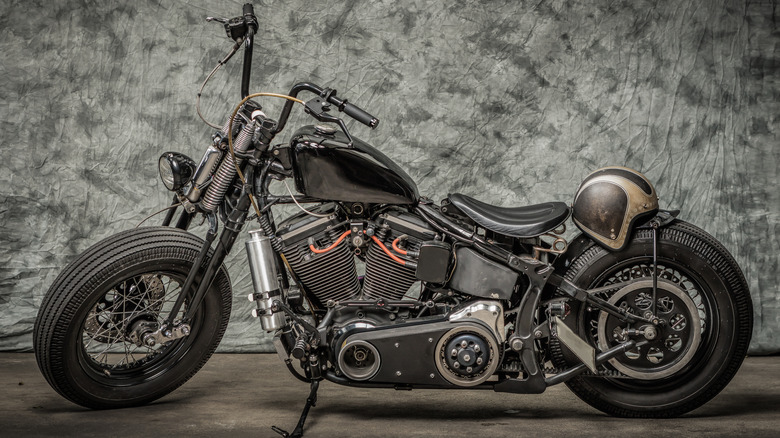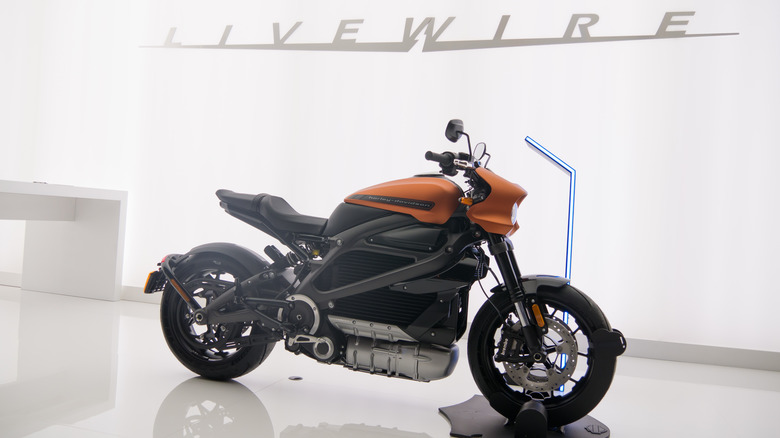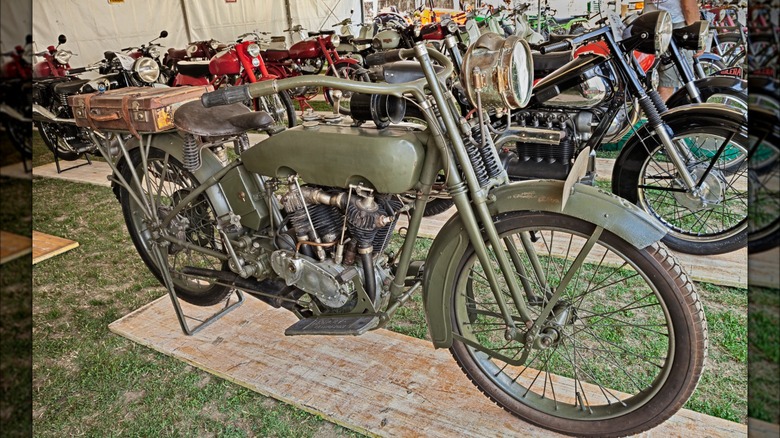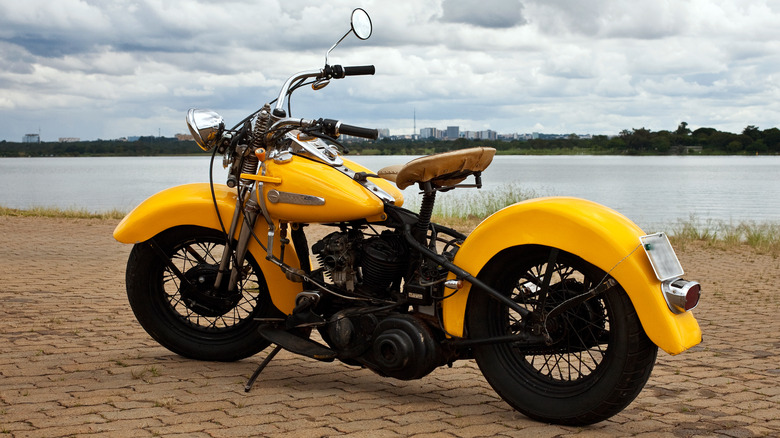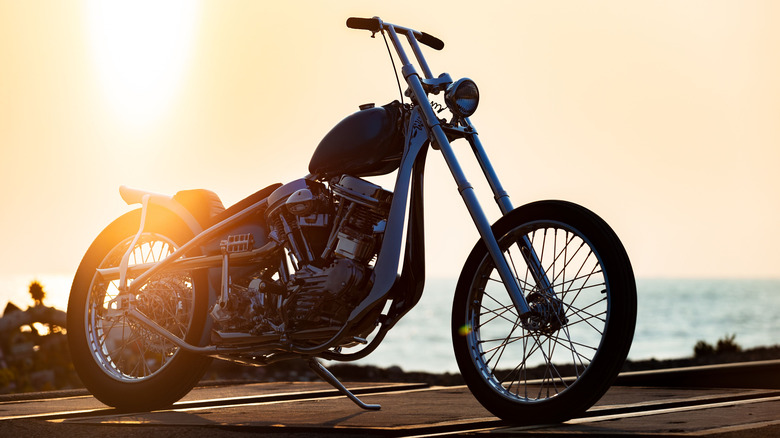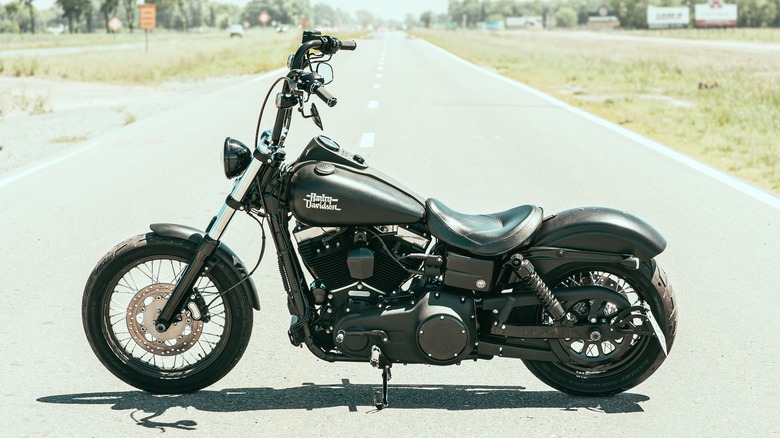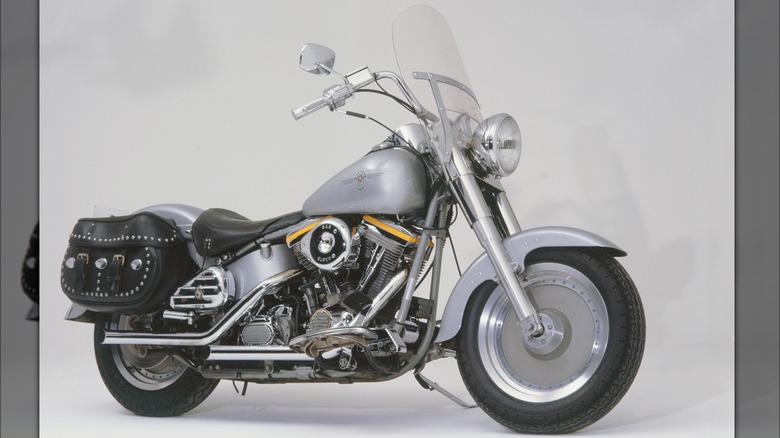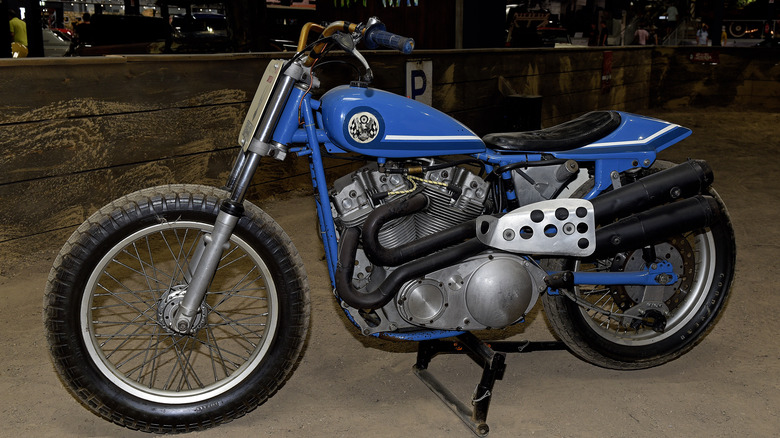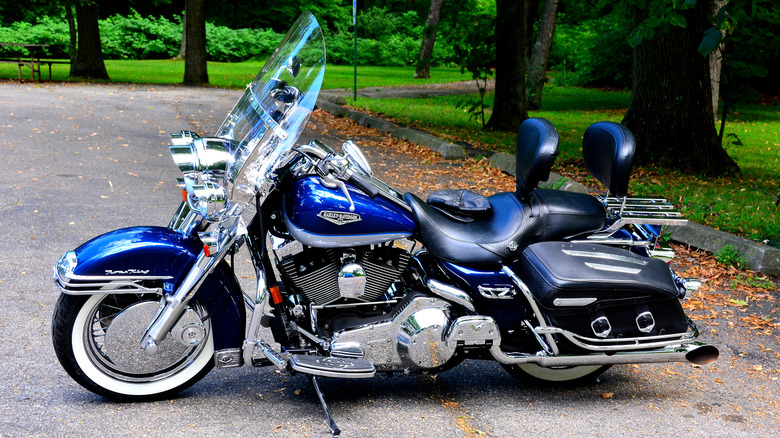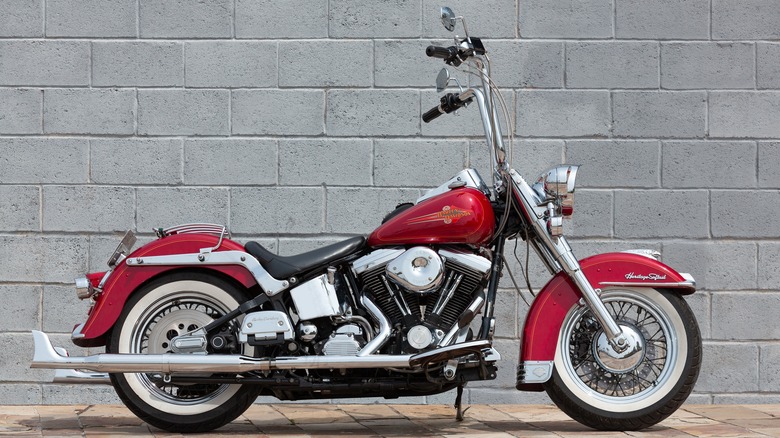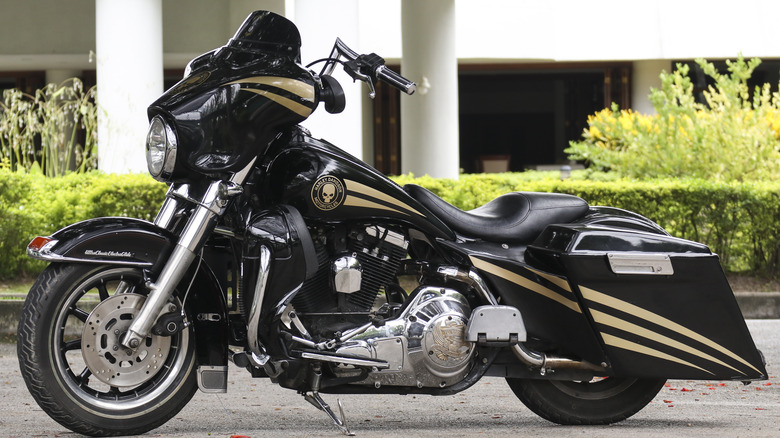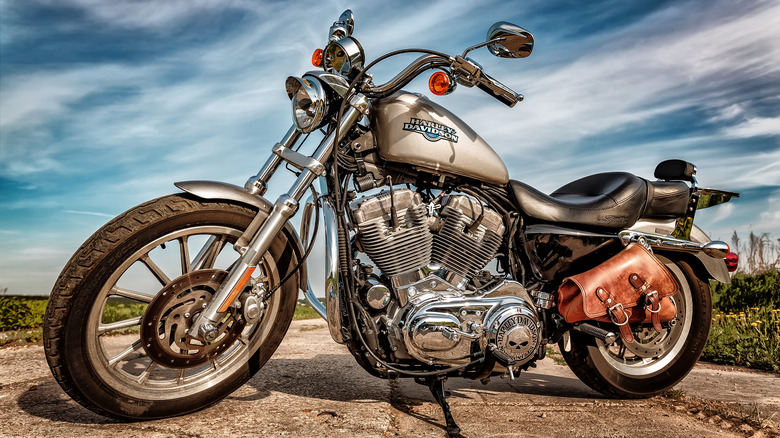11 Of The Most Successful Harley-Davidson Motorcycles In History
At the turn of the 20th century, William S. Harley and Arthur Davidson began attaching single-cylinder engines to bicycles, and in 1903, they founded their legendary company: Harley-Davidson. For more than 120 years, the company has been developing and producing some of the most iconic and exceptional motorcycles ever made.
Success, of course, is relative and can be measured in various ways. Here, we have chosen a few key metrics and indicators to allow us to quantify the success of each motorcycle we have chosen. We will consider sales figures, years in production, and overall influence on the industry and popular culture. By focusing on these metrics, we can tell the story of some of the best bikes Harley-Davidson has to offer.
Our list features numerous groundbreaking models that set new standards and paved the way for future technological breakthroughs. From early innovations like the Model J to modern marvels like the LiveWire, each motorcycle has offered something unique and continued the brand's enduring legacy and illustrious history.
Join us as we explore 11 of the most successful Harley-Davidson motorcycles in history. In doing so, we will uncover the stories behind the bikes. We will investigate their origins, analyze their design, evaluate their performance, and appraise their legacy. Through this journey, we aim to celebrate the remarkable achievements of these iconic models and admire their enduring appeal to motorcycle enthusiasts around the world.
Harley-Davidson LiveWire (2019-Present)
For Harley-Davidson, the future is now, seeing the potential of EVs (Electric Vehicles) as the market expands. The LiveWire, launched in 2019, is their response to the shifting tectonic plates of the industry. It marks the company's first foray into the EV market and a more sustainable and technologically advanced future.
Powered by an electric motor, the Livewire delivers instant torque and rapid acceleration that gas engines struggle to match. According to LiveWire, it has a range of 146 miles, depending on how you drive the bike. It can be recharged in about an hour with charge points to plot your route using the LiveWire app. The design combines classic features that Harley-Davidson is known for with more modern elements. It's sleek and muscular and includes a touchscreen display, LED lighting, and a futuristic frame. The riding experience is smooth and silent, a significant departure from the loud, aggressive engines Harley-Davidson is known for.
However, it hasn't sold well thus far. Customers aren't convinced that LiveWire is worth the substantial investment. Though prices have dropped, concerns about range and charging times are still at the forefront of potential customers' considerations. Additionally, some traditional Harley enthusiasts are hesitant to embrace the electric model. That being said, it still represents a major step in the trajectory of the company, which is why it has been included on our list. Looking ahead, LiveWire could pave the way for more advanced and widely accepted electric models, potentially influencing the broader motorcycle market.
Harley-Davidson Model J (1915-1929)
The Model J isn't exactly where it all began. That honor goes to the Model 1. But, in terms of vintage Harley-Davidsons that had the most success, the Model J certainly earns its place on our list. Originally produced for the military way back in 1915, it represented a major leap forward in terms of engineering and design.
While not powerful by today's standards, the Model J was a revelation. With its three gears and 61 cubic inch (1000 cc) F-Head motor, it could produce 15 horsepower. At the time, this was a huge deal and helped catapult the company into the public consciousness. This, along with its electric lighting system, represented the future. Its innovative design and reliable performance established it as a popular choice for civilians and military personnel alike and it remained in production until 1929.
It was during WW1 that the Model J really came to the fore. The U.S. military, impressed by its power, deployed the motorbike extensively throughout the conflict. This boosted Harley-Davidson's reputation and guaranteed the Model J's place in motorcycle history. The motorbike was a huge success for Harley-Davidson. It established design and engineering standards that would define Harley-Davidson's bikes for decades to come. Certainly not as well-known as some later models, it is still one of the most successful motorcycles the company has ever produced. It was extremely successful at the time, and this success helped pave the way for future success.
Harley-Davidson EL Knucklehead (1936-1947)
By the 1930s, Harley-Davidson had established itself as one of the top motorcycle manufacturers in the U.S. but was losing ground to its arch-nemesis, Indian Motors. The limitations of Flathead and side-valve engines were becoming ever more apparent as manufacturers looked to eke out ever more power from the engine. Cue the EL Knucklehead. Launched in 1936 and named for the distinct shape of its rocker boxes, which resembled knuckles, it heralded a new era of performance, dominance, and reliability for Harley-Davidson.
Key to the Knucklehead's success was the 61 cubic inch (1000 cc) V-twin engine. It used overhead valves (OHV) which resulted in better airflow and was capable of cranking out 40 horsepower. It also featured recirculating oil systems, an improvement from the total-loss systems from the past. Although it suffered from some teething problems, the innovative design and engineering set new standards for motorcycle engines.
The bike's combination of power, reliability, and distinctive style made it a favorite for motorcycle enthusiasts. Critically, it was better than what Indian Motors had to offer. The Knucklehead played a crucial role in solidifying Harley-Davidson's reputation for building hardy and high-performance motorcycles. It helped the company to dethrone Indian Motors as the number one motorcycle manufacturer in the country. The Knucklehead remained in production until 1947, and its legacy endures to this day. It continues to be a highly sought-after classic bike for collectors and restorers alike, cherished for its historical significance and groundbreaking design.
Harley-Davidson Panhead (1948-1965)
Following WWII, a victorious and optimistic America looked to its future, and it was bright. Vastly increased post-war prosperity meant that many people had more disposable income. Returning soldiers who had developed a passion for riding wanted to continue at home. Motorcycle clubs — including the Hells Angels — were forming at this time. America's roads were about to get an extreme makeover and people anticipated the future of interstate travel.
In this context, the Panhead was launched in 1948 — just in time to capitalize on a post-war motorcycle boom. Following the success of the Knucklehead, the Panhead marked another significant period of technological advancement for Harley-Davidson. Its eponymous 74 cubic inch (1,200 cc) engine featured aluminum cylinder heads that replaced the cast iron heads used in the Knucklehead. This change significantly improved heat dissipation, allowing for better cooling and more efficient performance. Additionally, it incorporated hydraulic valve lifters, reducing the need for frequent maintenance and adjustments. The recirculating oil system was further refined to ensure consistent lubrication and cooling of engine components, contributing to the engine's durability and longevity.
The enduring success of the Panhead is a result of the intersection of innovative engineering and trends in society. It became the bike of choice for many Americans. The rapidly improving highway system coupled with a staggering increase in household wealth suddenly made hitting the open road much more appealing and accessible. The Panhead provided the necessary tools with which to undertake this new American pastime.
Harley-Davidson Dyna (1991-2017)
The Harley-Davidson Dyna, produced from 1991 to 2017, is renowned for its distinctive design and customizability. Since its inception, it has been a fan favorite. Providing power and versatility, it could be easily adapted to individual riders' requirements. Over its illustrious production run, several models have been released, each offering slightly different variations on a theme. That theme was meant to combine classic Harley style with state-of-the-art performance. At the time, it was extremely successful on those terms.
The Dyna used Harley-Davidson's Evolution engine, initially featuring an 82 cubic inch (1340cc) engine. This was later replaced by the Twin Cam 88, Twin Cam 96, and Twin Cam 103 engines respectively. These engines were known for their reliability, performance, and ease of maintenance. Indeed, some Dyna models were the first to use these advanced engines, showcasing Dyna's role as a pioneer.
Its appeal extended far beyond its mechanical attributes. It became a cultural icon, especially among custom builders and motorcycle clubs. The design of the bike made it highly customizable, allowing riders to extensively modify their Dynas, improving performance and enhancing aesthetics.
The Dyna's legacy is characterized by its balance of traditional Harley-Davidson styling with modern performance features. It included models like the Dyna Wide Glide and Super Glide, highlighting the line's broad appeal. Despite its discontinuation in 2017, the Dyna remains a beloved motorcycle among Harley-Davidson enthusiasts, cherished for its distinctive character, customizability, and enduring impact on the motorcycle community.
Harley-Davidson Fat Boy (1990-Present)
The Harley-Davidson Fat Boy, launched in 1990 as part of the Softail family, is one of the company's most iconic models. With its wide, robust appearance, it featured solid-cast disc wheels, a wide front fork, and a distinctive shotgun exhaust. Its unique style and aesthetics set it apart from other motorcycles and made it an instant classic.
The Fat Boy featured a powerful 80 cubic inch (1,340 cc) Evolution engine. This air-cooled V-twin engine was known for its technological prowess and power and was a key factor in the bike's popularity. In 1999, the Fat Boy received an upgrade with the Twin Cam 88 engine, which improved performance even further and added to its appeal.
One of the key moments that catapulted the motorbike into the popular consciousness was its inclusion in "Terminator 2: Judgment Day" in 1991. It's Arnold's bike of choice and after liberating it from a hostile biker club, he ends up in an epic chase, trying to save John Connor from the evil Terminator. An iconic bike for an iconic movie. This, along with the bike's specs, has ensured Fat Boy's legacy as a truly legendary contribution to Harley-Davidson.
Over the years, it has continued to evolve, with newer models incorporating advanced technology and improved performance features while retaining the classic look that made it famous. Today, it is still a symbol of power and style, and given that it is still being produced, it doesn't look like it is changing any time soon.
Harley-Davidson XR750 (1970-Present)
And now for something completely different. In October 1975 huge crowds gathered at Kings Island Theme Park, Ohio. They were there to witness the legendary Evel Knievel attempt to jump 14 Greyhound buses — a world record. It was televised live, and the whole world was watching as he accelerated towards the ramp, flawlessly executed the jump, and did a lap of celebration. His bike of choice: A Harley-Davidson XR750. This phenomenal feat showcased both Evel Knievel's bravery and the exceptional capabilities of the motorcycle.
The XR750, launched in 1970, was designed for flat-track racing. It quickly established itself as a dominant force in the sport, and between 1972 and 2008, it won 29 of 37 American Motorcycle Association (AMA) Grand National Championships. Its success is down to its design. Its 46 cubic inch (750cc) V-twin engine was custom-tuned for the high performance and durability required for the track. Its lightweight design and exceptional handling meant it outperformed its competitors for years.
Between 1970 and 1975, it became the motorcycle of choice for Evel Knievel, guaranteeing it center stage in popular culture. Coupled with its phenomenal track record at the AMA, the XR750 is an incontrovertible success. Not in terms of sales — It wasn't for sale to the general public, and only about 500 were ever produced. But in terms of achievements, it is legendary. Multiple AMA titles and stunt world records speak for themselves, and the motorcycle has guaranteed itself an esteemed position in the annals of Harley-Davidson's history.
Harley-Davidson Road King FLHR (1994-Present)
When launching a new bike, serious considerations need to be made. How do you balance features that pay homage to the models of the past, while also incorporating advanced technology and engineering that eyes the future? The Harley-Davidson Road-King, introduced in 1994, deftly strikes the balance between old and new, tradition and innovation, timeless style, and futuristic design.
Powering the bike is a Milwaukee-Eight V-Twin engine. Its 114 cubic inch (1868 cc) engine provides 96 horsepower. This provides the torque and power necessary for long-distance cruising. And this is exactly what the Road King is designed for. The chassis is designed to easily cater to extended road trips. It comes equipped with hard saddlebags and can handle the heaviest of loads, ensuring comfort and stability even when fully loaded with gear. Its plush seat, ergonomic handlebars, advanced suspension, and electronic cruise control guarantee rider comfort on longer trips.
The Road King has proved irresistible to Harley-Davidson fans for decades and is still in production today. Over the years, it has been enhanced, improved, and upgraded. Its suspension, braking, engine, and electronics have all been overhauled. But it has always retained its classic aesthetic appeal. Effortlessly blending classic design and modern performance, the Road King is a cultural icon that embodies freedom and the beauty of the open road.
Harley-Davidson Softail (1984-Present)
As has often been the case with Harley-Davidson, it was necessary to look to the past to build for the future. This time, the company backward-engineered a motorbike that featured decidedly modern engineering. The Softail, introduced in 1984, cleverly combined the classic aesthetics of a vintage hardtail with the modern comforts of a state-of-the-art suspension system. This innovative hidden rear suspension made the frame appear rigid but provided a smooth suspended frame experience.
The original Softail was a historical breakthrough for Harley-Davidson and epitomized their attitude to innovation and design. Powered by an 82 cubic inch (1340cc) Evolution engine, it provided about 70 horsepower. The engine was renowned for its reliability and ease of maintenance and galvanized the company's reputation for quality and performance. The hidden rear suspension became the defining feature of the Softail.
Since its inception, the Softail has gone through many iterations, encompassing a variety of models. The Fatboy we discussed earlier is the standout model but there are several others to choose from. Modern models are powered by the Milwaukee-Eight V-Twin engine, which offers significant improvements in power and efficiency.
But throughout the years, the Softail aesthetic hasn't changed. It was a game-changer upon release and still retains a deserved place at the forefront of Harley-Davidson motorcycles. The Softail adapts and endures. It is indicative of the company's ability to innovate while also staying committed to its heritage and branding, carefully cultivated over the decades.
Harley-Davidson Electra Glide (1965-Present)
Circa the early 60s, revolution was rumbling along the highways of the U.S. A spirit of wanderlust permeated the zeitgeist, and the touring market was crying out for a comfortable, powerful machine capable of conquering long distances. Harley-Davidson answered the call with the launch of the Electra Glide in 1965. It filled a clear and present gap in the market and became an instant success for the company.
It was a spectacular upgrade on what had gone before. It was the first Harley-Davidson to feature an electric starter. Its performance stemmed from its V-twin engine. Originally a 74 cubic inch (1210 cc) Evolution engine, it offered a significant improvement over previous touring bikes and provided a smoother, more enjoyable ride over long distances.
This engine design was coupled with complementary design elements that resulted in a touring bike perfectly suited for the longer journeys the American public was demanding. The bike featured a large windscreen that shielded riders from the elements, saddlebags for essential gear, and a passenger backrest for added comfort on two-up adventures.
Sales have remained strong since the bike's inception, and it has gone through various iterations and evolutions. The engine was first replaced with an 80 cubic inch (1,340 cc) Evolution engine, and later with a Milwaukee-Eight engine, either 107 cubic inches (1,745 cc) or 114 cubic inches (1,868 cc). The Electra Glide's story is one of innovation, comfort, and a deep visceral connection to the human need to explore.
Harley-Davidson Sportster (1957-Present)
Far and away, the most successful bike ever produced by Harley-Davidson is the Sportster. Launched in 1957, it was destined to become their best-selling model ever. Its introduction coincided with a growing youth culture that valued speed and style. Through nearly 70 years of production, it has provided Motorcycle enthusiasts all over the world with their own unique Harley-Davidson experience. Popular when released and popular now, it has evolved, adopting new technologies where required, and losing old ones when necessary.
But it has never lost its original style. It was designed as a lighter, agile alternative to the heavier models on offer at the time. It featured a classic, minimalist design and a low seat. Originally powered by an Ironhead OHV 45 cubic inch (748cc) engine, the sound of the throttle was incredibly appealing to thrill-seeking riders. Later, the Sportster featured an Evolution Engine. The most modern iterations boast advanced fuel-injection systems and sophisticated electronics. Through decades of technological innovation, the Sportster has maintained relevance. It has plenty of torque, but its nimble handling and smaller size make it well-suited for cruising and city driving.
Over its decades-long production run, it has been a fan favorite. It has been a top seller since it was launched. It has consistently attracted new generations of riders while offering something to long-term fans of the brand. It is the most successful Harley-Davidson motorcycle in history and continues to wow motorcycle enthusiasts across the world.
